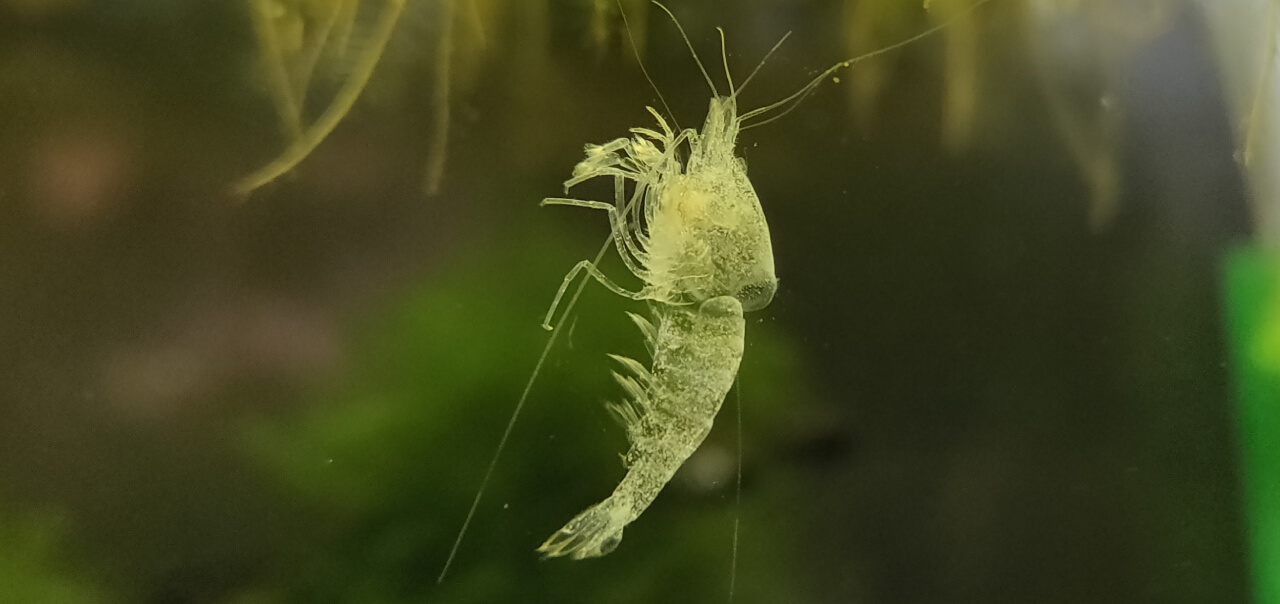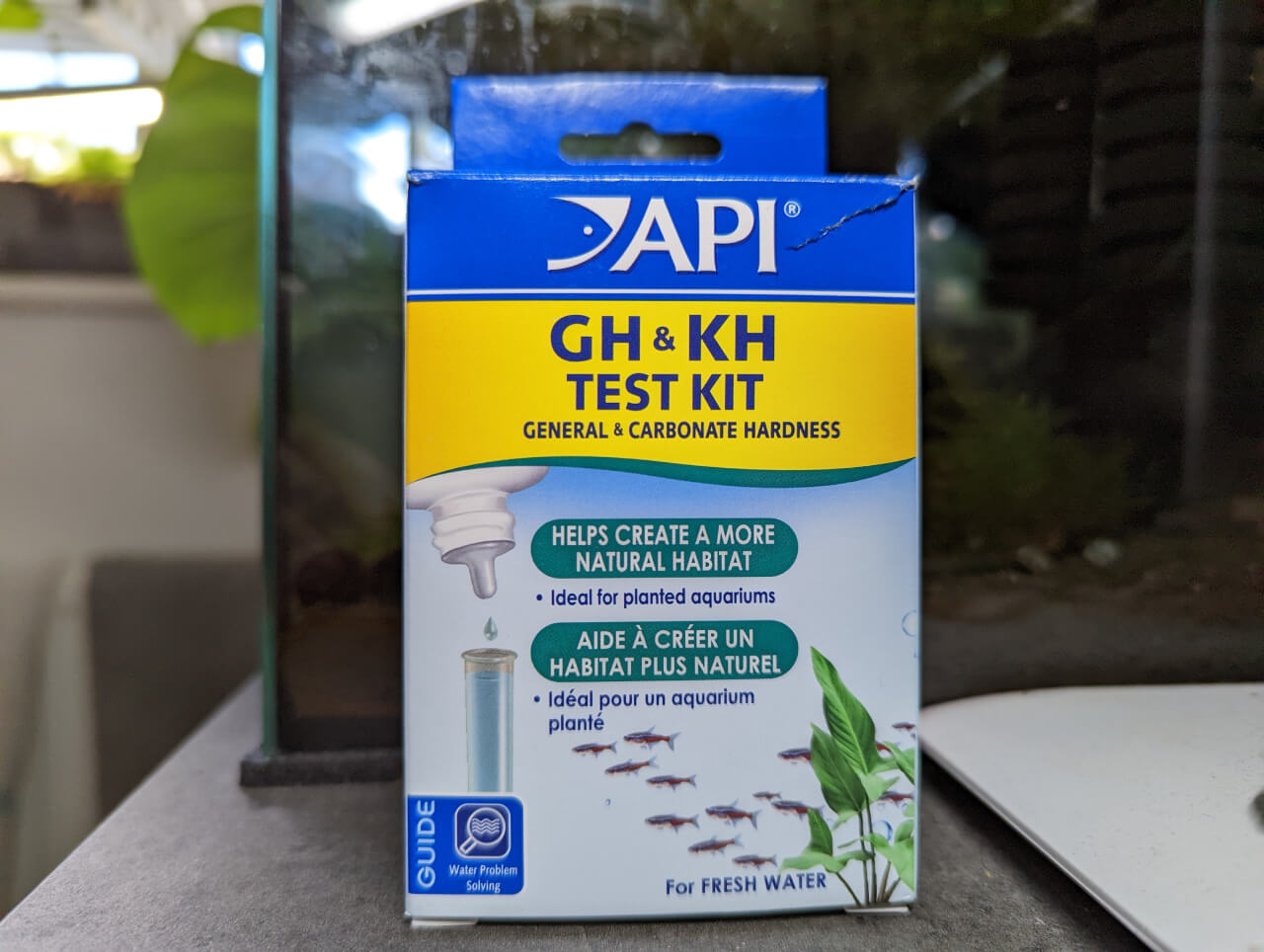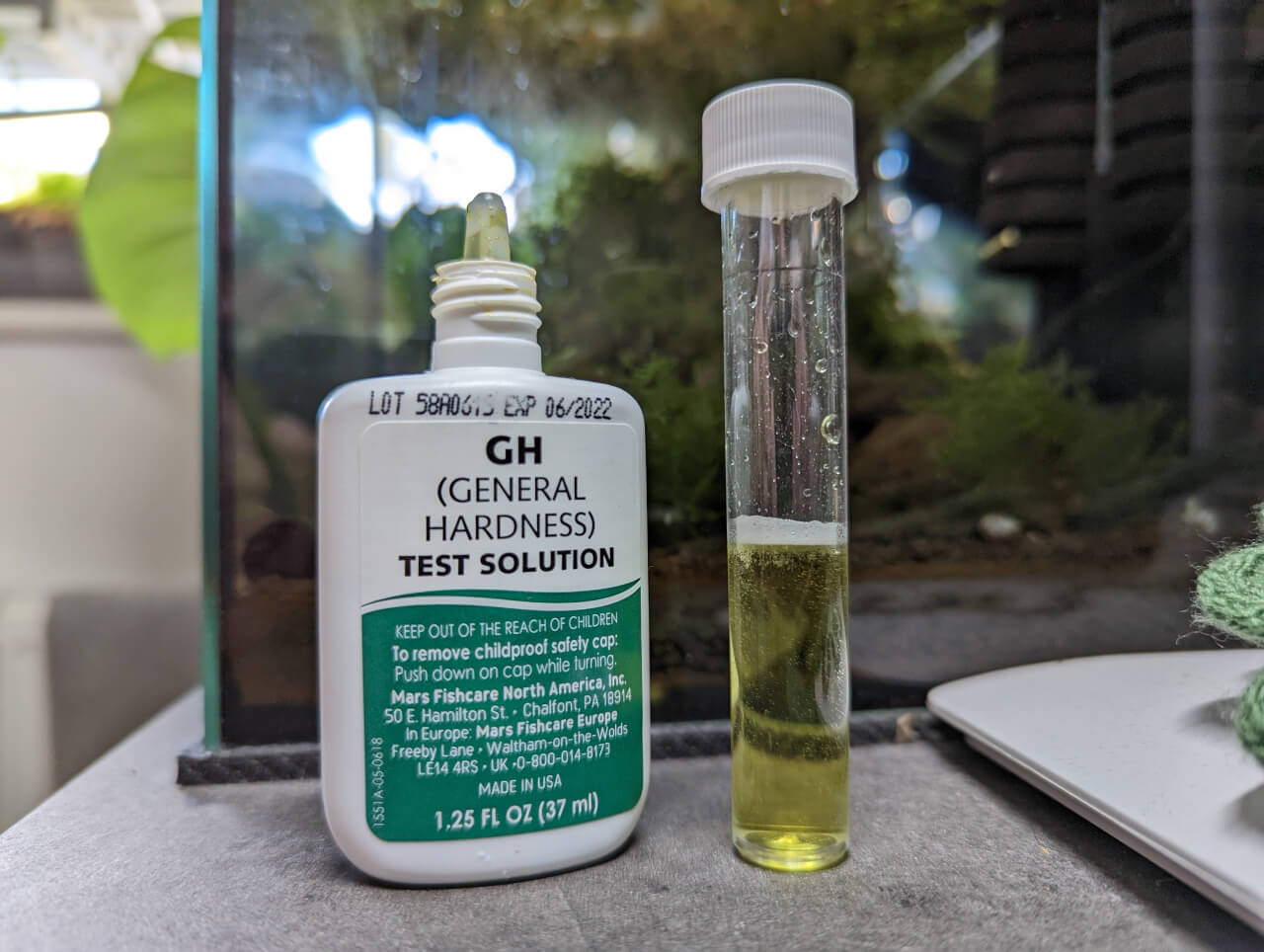The General Hardness (GH) is a measurement for how hard or soft water is. Technically, it refers to the amount of calcium and magnesium ions in the water.
It’s usually measured in dGH (degrees of general hardness) but can sometimes also be measured in ppm (parts per million).
As a rough guideline: soft water is considered to be anything under 6 GH, moderate hardness between 6 and 12 GH, and very hard water will be above 12 GH.
Remember that the GH refers to both the calcium and magnesium levels. If your general hardness level is within the safe range, but you’re still experiencing molting issues, it could be that your calcium is high whilst your magnesium is low or vice versa.
Don’t confuse the general hardness with carbonate hardness (KH). These two measurements play different roles in keeping your shrimp tank healthy and are equally important.
Why it’s important for shrimp
Keeping the general hardness under control is very important for your colony’s health.
Check the relevant species page to find the right water parameters for your shrimp, but as a general rule of thumb:
- Neocaridina shrimp prefer living in water with a GH between 4 and 10
- Caridina shrimp should be kept with a GH of 4 to 6
The hard elements dissolved in the water ensures that there are enough salts and minerals for muscle and shell development. Roughly once a month each shrimp will molt, and if the mineral balance isn’t quite right it can cause them molting problems.
For example, if the GH is too low, it can prevent the shrimp taking in enough calcium to form a healthy new exoskeleton. Their shell will instead be soft and flexible, and this can make it very hard to break out of, causing a failed molt.
On the opposite end of the spectrum, if the GH is too high instead, they could build a shell that’s too tough to break and also get stuck in a failed molt.

Unfortunately, failed molts can be quite a common cause of death, and you don’t get much warning.
Snails in your tank will also appreciate the calcium and magnesium in the water for growing their shells. You might notice weak/broken shells if the GH is too low.
Planted tanks will make use of the magnesium too. A common sign of magnesium deficiency in aquatic plants is the leaves turning a lighter colour but the veins staying dark.
Difference to Carbonate Hardness (KH)
Limestone, for example, is essentially calcium carbonate, which will raise both the calcium (affecting GH) and carbonate (KH) levels in the water. So it can be confused as causing a single “hardness” increase, but it’s actually 2 distinct types raising at once: general and carbonate.
Most tap water, especially in the UK will contain limescale/limestone, this is what causes the mineral build-up in kettles. If you’re using tap water rather than remineralized RO water, there should be plenty of GH and KH already.
How to measure GH
Measuring the GH and KH is incredibly easy when you’ve got the right testing kit.

The instructions below are specific to API’s freshwater GH test kit:
- Add 5ml of water into a clean test tube
- Hold the test liquid bottle upside down over the test tube and squeeze 1 drop at a time
- After each drop, cap the test tube and invert a few times to mix the liquid
- Stop adding drops when the water changes from orange to green
Make sure you hold the test liquid bottle vertically (completely upside down) so that the drops are all the same size. If you tilt the bottle instead you might trap air bubbles and cause the drops to be different sizes, which will give you an inaccurate result.
The number of drops required to change the water colour gives you the dGH.
For example, if your water changes from orange to green after 5 drops of the GH test fluid, your water measures 5 dGH.
Signs your GH is too high
Just like with all water parameters, don’t panic just because some parameter is slightly over a specific number.
Shrimp prefer stability above almost everything else.
You should only try to reduce the general hardness if you notice any signs your shrimp are struggling, or your GH is much higher than the safe range for your species.
Symptoms
Some of these symptoms can also have other causes, unrelated to high GH.
But, if you spot some of these signs, test your water’s GH level:
- Failed molts: shrimp getting stuck in molts
- Build-up of minerals near the water level
Possible causes of high GH
- Water changes with higher GH/TDS
- Not using RO/distilled water for evaporation top-offs
- Hardscape rocks: some rocks contain calcium and dissolve over time
How to lower GH in shrimp tanks
The safest way to reduce the general hardness is with water changes.
Don’t try to change enough water to reach your end goal straight away. You don’t want to stress your shrimp by messing with their parameters too much.
Gradually reduce the water hardness by replacing it with softer water over time.
- Perform water changes using remineralized water with better parameters
- Perform a small water change with pure RO
Tip: Top-off evaporation with RO water to prevent TDS/mineral creep.
Do water changes using remineralized water
Mixing your own remineralized water is really easy, and gives you complete control of the parameters.
You can mix the water to whatever GH you’d like, and gradually add it into your tank.
This can be pretty slow if you’re 10% doing water changes every two weeks.
You could increase the amount or frequency of the water changes for a little while if your water desperately needs fixing.
Do a small water change with pure RO water
Sometimes it can be helpful to do a water change using only reverse osmosis (RO) water.
Doing this will dilute all of your water parameters, not just GH. This will impact your pH, KH, and TDS too.
If you’ve accidentally caused your TDS to creep up, this can work a bit quicker than a normal water change.
Example parameter change
Let’s assume your water has these parameters:
- GH: 10
- KH: 5
You take out 10% of the water, and add the same volume of RO water back in.
You’ll now have a tank with around 9 GH and 4.5 KH.
Prevent TDS creep by using RO water
When water evaporates from your aquarium, the minerals and salts get left behind. This causes the remaining water to get harder, and its TDS creeps up.
If you top-off the tank with more tank water, you’ll be adding even more minerals and cause the hardness to rise.
You should use reverse osmosis or distilled water for top-offs to prevent this.
The pure water gets the water level back up, and dilutes the hardness back to its original level, too.
GH too low
Don’t panic if your general hardness is just below a specific value. The shrimp will appreciate stable parameters more than hitting some specific number target.
Only try to increase the GH if you spot any of the symptoms below or your water is a lot lower than your species’ safe parameter range.
Symptoms
These symptoms don’t necessarily mean that the GH is definitely too low, but they are helpful clues.
- Failed molts
Possible causes of low GH
- Water changes with lower GH/TDS
- Using products like Seachem CupriSorb in your filter
How to increase GH
Use any of these methods to increase the water hardness, but preferably only one at a time. You don’t want to swing the water parameters too much too quickly.
- Add cuttlebone to the tank
- Add crushed coral to the tank (this will raise GH, KH, and pH)
- Use Seachem Equilibrium
- Perform water changes with harder remineralized water

